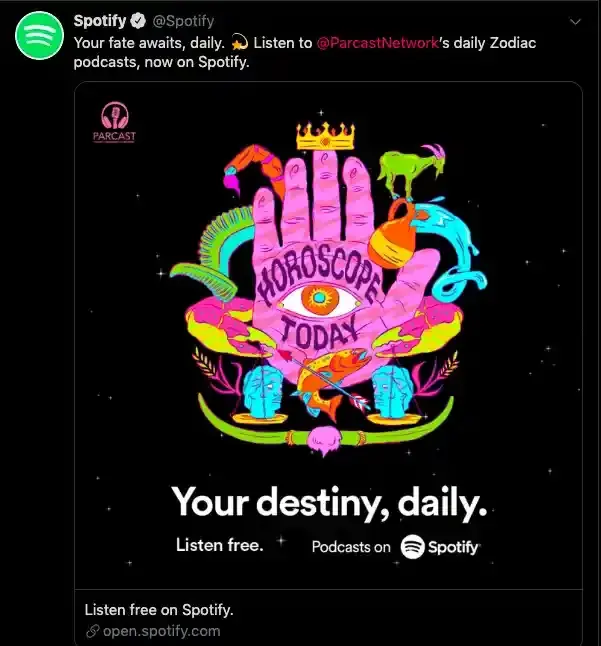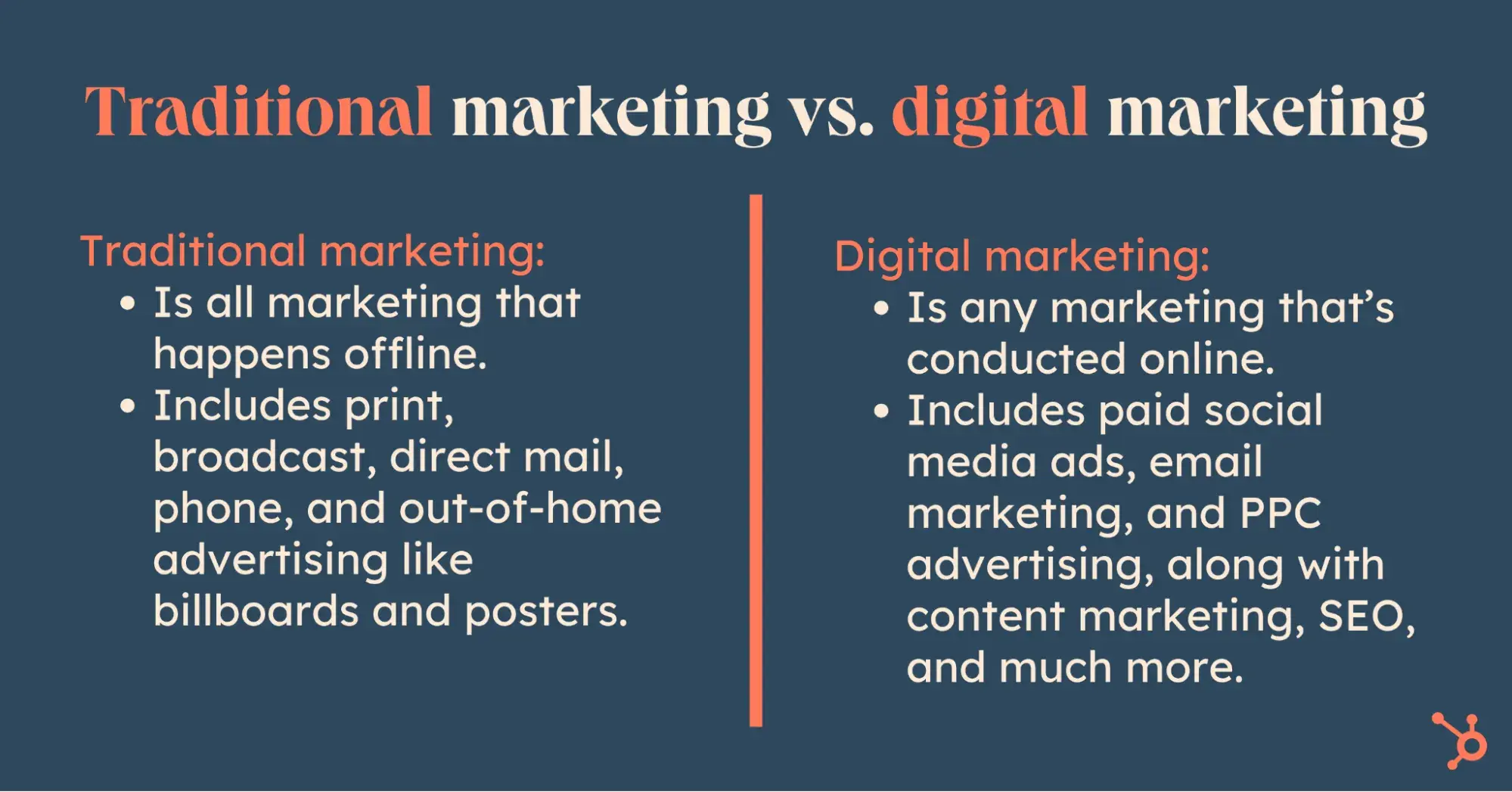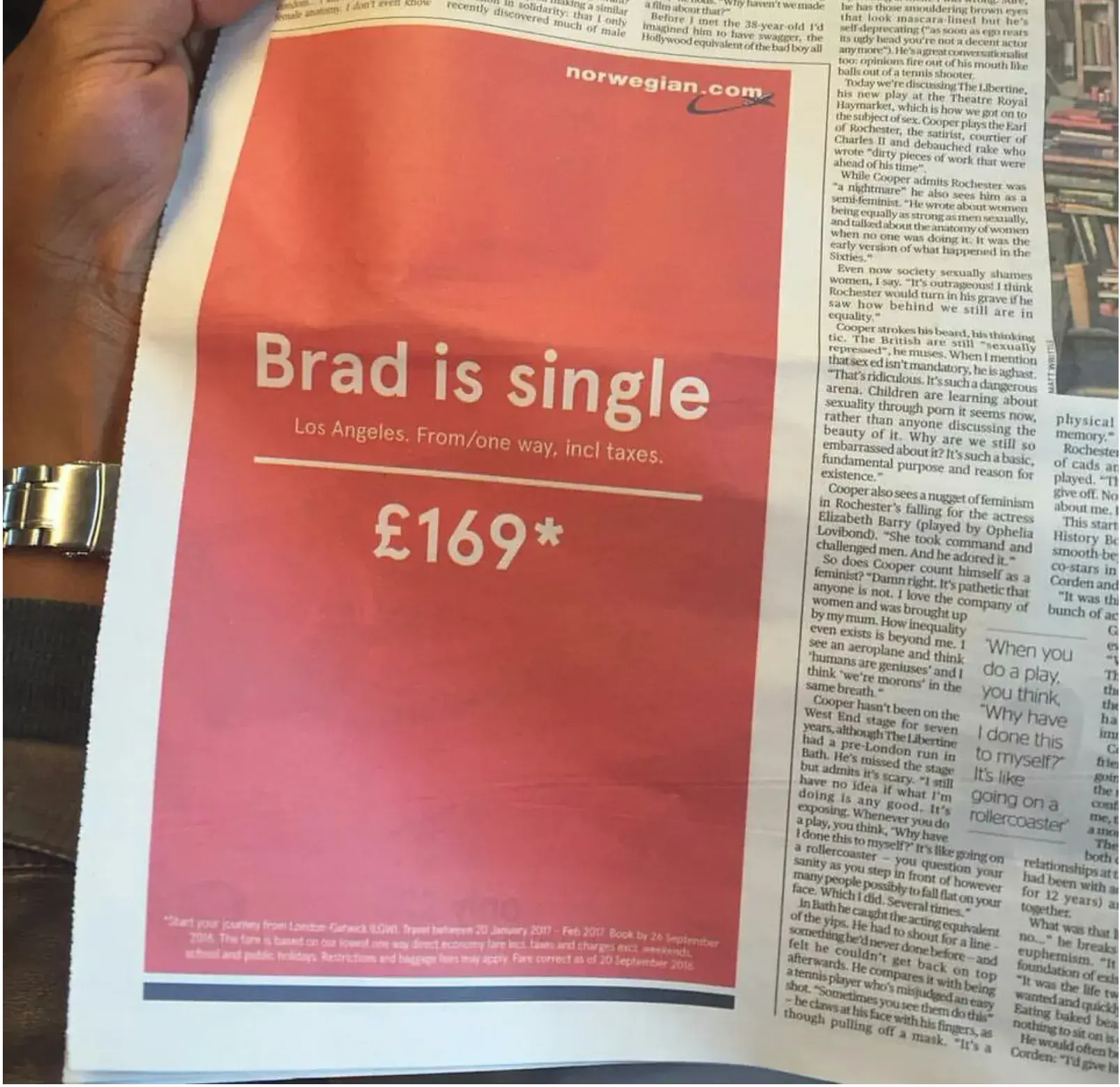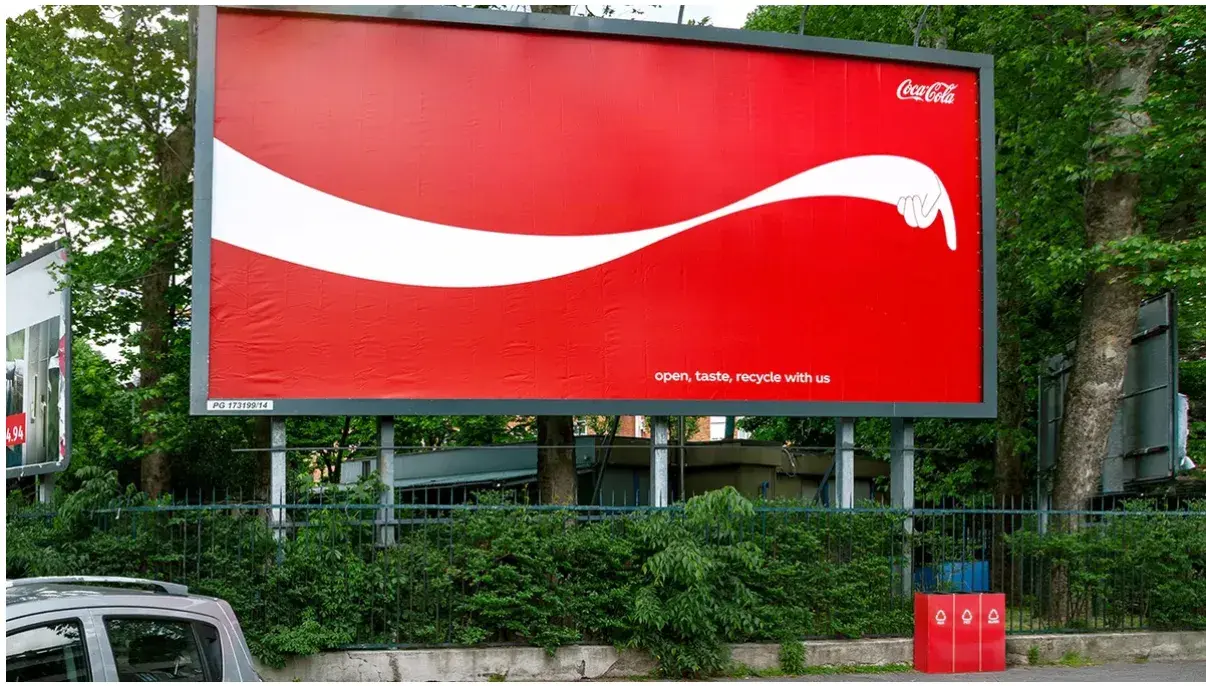Conventional advertising versus digital advertising has turn into a scorching subject amongst advertising professionals.

I got down to be taught the professionals and cons of every and return with my findings so as to make an knowledgeable determination about advertising your model.
I’ll go over what the 2 phrases imply, and the way they work collectively. Then, I’ll dive deeper into conventional advertising, which typically feels prefer it doesn’t get a good shake within the present digital-dominated panorama.
However should you’re attempting to decide on between the 2, I’ll give away the ending earlier than we start: the reply is each.
Desk of Contents
What’s conventional advertising?
Conventional advertising is all advertising that occurs offline. This consists of print, broadcast, junk mail, telephone, and out-of-home promoting like billboards and posters.
It’s known as the standard methodology as a result of it’s the best way advertising was achieved pre-internet. However despite the fact that the up to date market has included newer strategies, conventional advertising isn’t going away.

What’s digital advertising?
Digital advertising, however, is any advertising that’s carried out on-line. Examples right here embody paid social media adverts, e-mail advertising, and PPC promoting, together with content material advertising, search engine optimisation, and far more.
This publish gained’t go into all the main points, however for a deep dive into digital advertising, take a look at What is Digital Marketing: Everything You Need to Know.

Because the world turns into extra digital, the best way we market has developed. Not solely is digital advertising typically more cost effective than conventional, but it surely’s additionally a extra direct approach to join with goal audiences globally.
Digital advertising has now overtaken conventional advertising as the first approach to attain customers. However actually, these two methods coexist, and mixing strategies is turning into the norm.

Conventional Advertising vs. Digital Advertising
Conventional advertising is an strategy during which entrepreneurs determine their viewers and place adverts the place their viewers will see, hear, or work together with them offline, similar to print adverts, billboards, or tv commercials. Digital advertising is facilitated on-line and makes use of paid or natural adverts on social media or serps, in addition to e-mail advertising, influencer advertising, and video advertising, to call a number of.
In as we speak’s panorama, it’s no shock that digital advertising is an more and more necessary income driver. The truth is, 78% of businesses that use social promoting outperform people who don’t.
Disadvantages to digital advertising do exist, nevertheless. Chief amongst them are privateness and safety considerations. In keeping with the identical 2024 report, on-line information privateness is valued as a human proper by 74% of survey respondents.
In response, the tide has shifted towards extra safeguards, with 84% of entrepreneurs saying it’s affected their technique. Aside from that, digital advertising faces the problem of individuals being fed up with disruptive ads, like pop-ups and video, whereas viewing offline adverts favorably.
What about AI?
In 2024, in response to our State of Marketing Report, 85% of entrepreneurs say generative AI has modified how they are going to create content material, and entrepreneurs utilizing AI are “95% extra more likely to say their advertising technique was very efficient this 12 months than those that don’t.”
AI is, in fact, altering the sport for everybody — together with the advertising trade — and it’s but to be seen the way it will have an effect on the connection between conventional and digital. However one factor is for positive: it’s at present the only largest pattern driving trade development.
Varieties of Conventional Advertising
Now that we perceive either side of the coin, let’s take a deeper have a look at conventional advertising. It could possibly take many types, however the main varieties are as follows.
Print Media
Print media makes use of newspapers, magazines, and different printed supplies to market to potential clients. This feature is scalable, from domestically to globally learn publications.
A now-infamous instance of an attention-grabbing newspaper advert is Norwegian Airways’ “Brad is single” marketing campaign, which capitalized on the breakup of a celeb couple. I’m not one to gossip, however should you’re trying to attract eyes to your low, low costs, that’s a approach to do it.

Broadcasting
This refers to TV and radio commercials and goals to create model consciousness. Broadcasting depends on repetition, as the identical advert will play again and again.
An advert that has all the time caught with me is for Wendy’s hamburgers – the place a girl examines the competitor’s providing and asks, “The place’s the meat?”
Initially aired in 1984, the business later turned so iconic that I can nonetheless name up the girl’s voice in my head — despite the fact that I didn’t see the advert when it appeared. Forty years later, I’d say that’s good promoting.
Direct Mail
Unsolicited mail is when advertising supplies are despatched straight to your door.
These may be letters, postcards, flyers, catalogs, and even items, and the purpose is to attach with a person instantly — in contrast to with print or broadcast, the place the intention is to succeed in as many individuals as attainable.
An instance of a junk mail marketing campaign the place the mailing matched its goal comes from Ikea. To market one in all its aspect tables, a small pop-up model of the desk got here encased within the Ikea catalog.
It caught my consideration for the right parallel between Ikea’s flat-packed furnishings and the paper miniature meant to promote it.

Cellphone
Telemarketing, which incorporates cold-calling, is one other conventional methodology for reaching a prospect instantly. Direct telephone advertising goes a step additional than junk mail in aiming to generate a reference to the possible buyer.
I admit I needed to search for an instance for this one, and it’s tough to seek out a lot info since calls are so ephemeral.
However I discovered a number one telemarketing marketing campaign from Microsoft in 2009 when gross sales reps had been calling to promote the Workplace Suite software program. Sources say the corporate generated $1 million in income from this marketing campaign alone.
Out-of-Residence (OOH)
OOH advertising means it happens exterior your private home, and the first examples are static billboards, posters, indicators on buses, and painted wallscapes.
This can be a type of visible advertising that almost all usually makes use of photographs to convey its message. OOH is location-based and goals to market to folks passing by a selected spot.
As somebody who spent a lot of my life strolling round cities as an city researcher, one of these advertising is the almost certainly to name my consideration.
A wise instance that involves thoughts is the Coca-Cola billboards that appeared in European cities in 2019. The picture takes the model’s recognizable white ribbon and turns it into an arm, with a hand that factors to a recycling bin on the road.
The marketing campaign hints at Coke’s promise to make its bottles totally recyclable. And I personally, love one of these interplay between the advert and the city surroundings.

Significance of Conventional Advertising
It’d already be fairly clear from the above examples, however I need to break down a few of the explanation why conventional advertising continues to be necessary alongside digital advertising.
Belief
Connecting with potential clients is on the coronary heart of promoting. And recent surveys present that when requested about their most trusted promoting codecs, conventional advertising channels fill out the highest slots, with print adverts rating first.
So, even when it looks like we stay in a digital advertising panorama, in relation to belief, what’s tried and true works higher.
Loyalty
Provided that I hardly obtain mail anymore, I used to be stunned to be taught that junk mail ranked third in the identical belief surveys.
As well as, in response to a 2024 post from the Data & Marketing Association, customized mailings are set to make a comeback with up to date entrepreneurs for his or her capability to transform into long-lasting loyalty.
Attain
broadcasting, I used to be skeptical about how efficient radio adverts may nonetheless be, however once I acquired my palms on the results of a 2023 Edison Research survey, it turned out that should you spend any time in a automobile, you’re more likely to be listening to AM/FM radio (76% of listeners are).
That makes you an ideal viewers for adverts in that channel.
Chilly-calling was the opposite one I wasn’t so positive of. However identical to junk mail, cold-calling effectiveness is on the rise — and once more I used to be stunned by the numbers.
Cognism’s 2024 State of Cold Calling Report introduced that the success fee of B2B cold-calling doubled from 2023 to 2024 (from roughly 2% to 4%).
Professionals and Cons of Conventional Advertising
In comparison with digital advertising, conventional advertising has each execs and cons.
Professional: Native Audiences
Conventional advertising is nice once you need to attain a neighborhood or area of interest neighborhood. In the event you’re working in a small market, highly-specific advert placements may also help you attain the proper folks.
Professional: Repetition
One other benefit is repetition of adverts. And it’s not simply with TV commercials or radio jingles that may get caught in your head. When eager about OOH, it’s straightforward to think about how strolling previous the identical bus shelter billboard every day will increase model visibility and consciousness.
Professional: Credibility
And that leads me to credibility. With model recall, particularly within the public areas we occupy every day, adverts begin to really feel acquainted, like several a part of the surroundings, and add to credibility.
Con: Value
Conventional advertising may be pricier than digital advertising. In 2024, a median newspaper advert could run upwards of $750, whereas an internet advert 3-5 cents per click on.
Past that a part of the finances might be wasted on casting a large web and getting your advert in entrance of individuals exterior your goal.
Con: Concentrating on
This brings me to precision focusing on: it’s an integral a part of the digital advertising world — and an element that conventional advertising actually can’t compete with. In the event you want granular segmentation, not one of the advertising channels above offers you that.
Con: Measurability
Alongside the lack to exactly zoom in on sure goal audiences, measuring the outcomes of advert campaigns shouldn’t be as easy as with on-line advertising.
There are not any real-time outcomes or optimizations. And the method of fixing an advert will take longer should you understand it’s underperforming.
Can conventional and digital advertising actually work collectively?
Completely. My largest takeaway after sinking my tooth into the stats is that not solely is there room for each methods to exist, however it may be a bonus to double up and use them collectively.
Whereas conventional advertising can win over native audiences, it doesn’t provide a granular approach to goal. That hole may be full of digital advertising.
And with marked distinctions between the 2 strategies, I’d say it’s extra a query of multiplying choices than pitting the 2 in opposition to one another.
Editor’s word: This publish was initially revealed in September 2019 and has been up to date for comprehensiveness.

![Download Now: Free Marketing Plan Template [Get Your Copy]](https://no-cache.hubspot.com/cta/default/53/aacfe6c7-71e6-4f49-979f-76099062afa0.png)


















